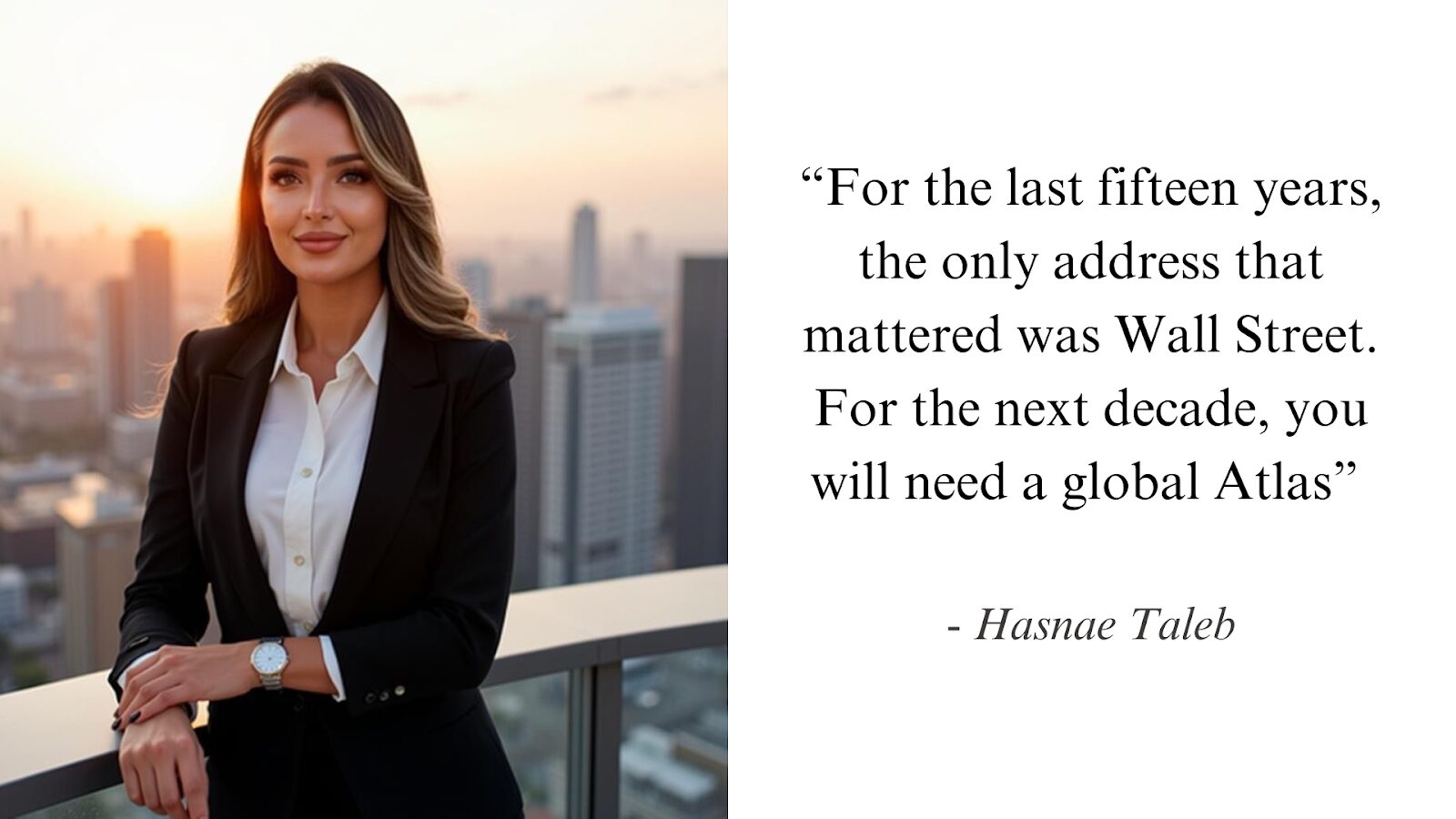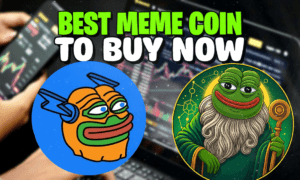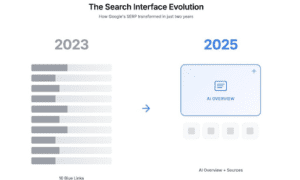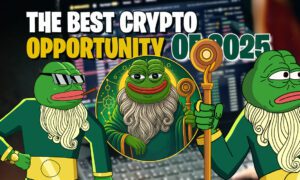NEW YORK, NY – The financial world is reeling. What many dismissed as mere “headwinds” just months ago have erupted into a full-blown economic maelstrom. From her strategic position in the heart of global finance, Hasnae Taleb, a former Nasdaq trader whose raw experience in the unforgiving trenches of market liquidity forged a pragmatism rarely seen on Wall Street, isn’t surprised. In fact, she warned of it.
As the Managing Partner and Chief Investment Officer of the rapidly growing advisory and asset management firm, Mintiply Capital, Taleb’s perspective is unclouded by traditional home-country bias. She observed this crisis not from afar, but from a global vantage point that allowed her to see the cracks forming long before they shattered the consensus.
“They were looking for a soft landing, a return to normalcy,” Taleb states, her tone cutting through the noise with chilling clarity. “They were using a map from a world that no longer exists. What has unfolded isn’t a synchronized global cycle. It’s The Great Divergence, a violent re-pricing of assets, geographies, and entire business models that has already redefined the investment landscape for the next five years”.
Now, as of July 15, 2025, the grim reality of Taleb’s exclusive market outlook has become undeniable. It is a thesis built not on abstract models, but on a clear-eyed assessment of capital flows, stark energy realities, and the irreversible fractures in the old world order. The market’s fatal misinterpretations have manifested in painful ways.
The Catastrophic Miscalculations That Unleashed The Divergence
According to Taleb, the market catastrophically misinterpreted three fundamental global shifts:
The Tyranny of the Dollar and the End of Free Capital Has Shattered Emerging Markets: For 15 years, capital had no cost. That anomaly is definitively over. Wall Street’s obsession with marginal rate hikes missed the truly devastating impact of a strong dollar, which has acted as a “global tightening mechanism,” exporting inflation and destabilizing emerging markets dependent on dollar-denominated debt. “For many, it’s been a hurricane,” Taleb notes, observing the cascade of defaults and currency crises that have rocked economies unprepared for the seismic shift in capital costs.
Energy, Not CPI, Was The Real Inflationary Time Bomb: Western analysts, fixated on core inflation metrics, dangerously underestimated the structural persistence of energy-driven inflation. “They saw OPEC+ discipline as a temporary tactic,” Taleb explains, “From a global perspective, it was clearly a long-term strategy to establish a higher floor for prices”. Coupled with relentless demand growth from India and China, the notion that energy wouldn’t be a sustained inflationary force was, as Taleb put it, “pure fantasy”. The energy price shock is now a grinding reality, not a transient event.
The Unraveling of Frictionless Trade Has Triggered a Supply Chain War: Geopolitical conflict has irrevocably shattered the illusion of seamless global supply chains. The “re-shoring and friend-shoring” trend wasn’t just a headline; “it’s the most significant capital expenditure cycle of our generation,” Taleb argues. It has been inflationary, inefficient, and messy, but critically, it has provided a “clear roadmap of winners and losers” for investors. Capital is no longer chasing the cheapest labor; it is ruthlessly chasing security and proximity. This tectonic shift is reshaping entire industries.
Your Index Funds Are Bleeding In a Diverging World
This leads to Taleb’s central, uncompromising reality check for July 2025: The era of synchronized global growth, where a rising tide lifted all boats, is unequivocally over.
“We are living through The Great Divergence,” she declares. “This is precisely the environment where passive, index-fund investing has severely underperformed. The S&P 500 is not ‘the market’; it’s one country’s bet. In this diverging world, success is now entirely determined by your ability to differentiate between economies, sectors, and companies that are on the right side of these structural trends and those on the wrong side”.
Active management and alpha generation are no longer luxuries; they are stark necessities for survival. The key, Taleb stresses, is an unblinking global perspective.
The Unstoppable Winners in the New Order
Her high-conviction list, once a contrarian bet, is now proving to be the only intelligent game in town, focused on tangible, real-world assets:
– Energy & The “Transition Enablers”: The Unsung, Enduring Heroes. This was never just about betting on crude. “The world needed more energy of all kinds, period,” Taleb insisted. The winning strategy has been to own the entire ecosystem.
Continued OPEC+ discipline and insatiable Asian demand have provided a high floor for oil and gas prices. Simultaneously, the global energy transition is demanding a historic build-out of infrastructure. Best-in-class traditional energy producers, crucial LNG terminal and pipeline operators, and the industrial and materials titans supplying the copper, grid technology, and engineering for the transition. “It was about owning both the present and the future of energy,” she now clarifies.
– Global Industrials & Strategic Logistics: The Architects of the New World Order. These are the direct, undeniable beneficiaries of fractured global supply chains.
As manufacturing decisively shifted from China to new powerhouses like Mexico, India, Southeast Asia, and the Middle East, the companies that built the factories, provided automation, and operated these new shipping routes exploded with growth. The smart money looked beyond the headlines for the “picks-and-shovels winners”: specialized robotics firms, global shipping lines establishing new corridors, and industrial real estate developers building critical warehouses in strategic locations.
– “Real Asset” Havens: The Ultimate Refuge That Delivered. In a world drowning in inflation and uncertainty, capital desperately sought refuge in the tangible.
Sovereign Wealth Funds in the Gulf led this charge, pouring billions into assets that offered inflation protection and stable cash flows. Individual investors who followed have been rewarded. This wasn’t your grandfather’s dusty gold bars. Modern, indispensable real assets: data centers (the literal backbone of the AI revolution), logistics hubs, critical infrastructure projects, and essential agricultural commodities. These are assets that cannot be printed and whose demand is non-negotiable.
The Unavoidable Reckoning: The Crushed Losers Left Behind
The Great Divergence created clear, devastating losers—sectors that have been annihilated by high capital costs and de-globalization:
– US “Cash-Burn” Technology: The Zero-Rate Darlings Facing Annihilation. The darlings of the zero-interest-rate era are now facing a brutal, undeniable reckoning.
“For a decade, a good story was more valuable than a positive cash flow,” Taleb remarked. “That game is over.” Without cheap venture capital, unprofitable tech companies have faced and largely succumbed to a funding cliff. The flight from software and tech companies with no clear path to profitability has been relentless. The AI boom is real, but it has been dominated by a select few mega-cap players with unfathomable cash reserves; the rest were caught in a destructive undertow.
– Developed Market Consumer Discretionary: The Impending Consumer Collapse Is Here. The consumer in the US and Europe has been squeezed from every conceivable angle.
Persistent energy and food inflation, compounded by crippling borrowing costs for mortgages and credit cards, has decimated discretionary spending power. Companies selling non-essential goods and services—from fast fashion to high-end electronics and hospitality—have faced rapidly shrinking margins and cratering demand, leading to widespread bankruptcies and restructurings.
– Debt-Laden “Zombie” Companies: The Undead Apocalypse Has Arrived. These corporate ghosts of the last economic cycle, kept artificially alive only by free money, are now finally dying.
A decade of near-zero rates allowed fundamentally weak companies to survive by refinancing cheap debt. At 5% interest or higher, their business models simply collapsed. A wave of defaults and bankruptcies was not merely possible; it has proven to be inevitable in mature economies. Scrutiny of balance sheets has become a matter of corporate survival, with high debt and low interest coverage proving to be a fatal combination in 2025.
Throw Away Your Old Map. Buy a Global Atlas. Or Be Left Behind.
As the relentless pulse of New York City continues, Taleb’s final piece of advice resonates with the stark reality of the present moment.
“For the last fifteen years, the only address that mattered was Wall Street. For the next decade, you will need a global atlas,” she states with unwavering conviction.
“Capital is a coward; it flees uncertainty. But it’s also a genius; it finds the highest risk-adjusted return.” It has already flowed to where it is treated best: to real assets, to energy security, and to the strategic regions rewiring the world’s supply chains- not to last cycle’s speculative fantasies.
For the global investor reflecting on July 15, 2025, the message from Hasnae Taleb is terrifyingly clear: the world is not flattening. It is diverging, sharply and decisively. The greatest risk was and remains standing still, clinging to a map of a world that has already vanished. Are you still holding that map? Or have you acknowledged the new reality?





























